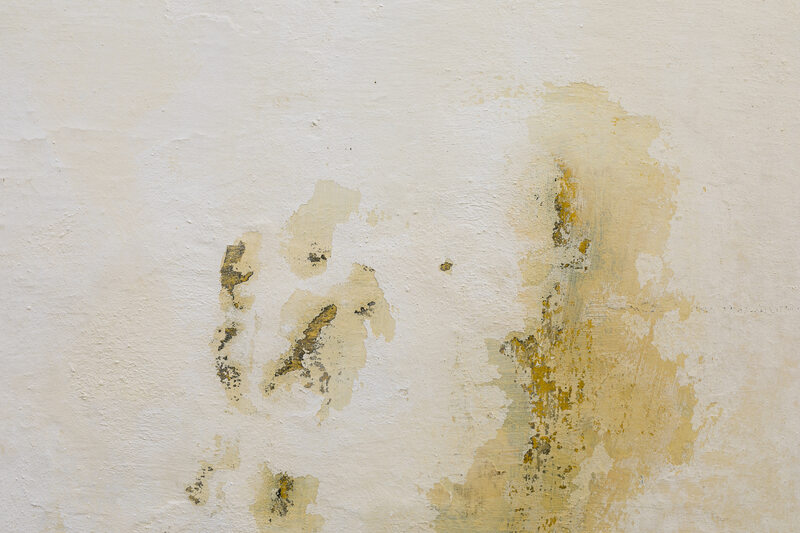Worried about mould growing on your walls? You are not alone. Many others are like you and are looking into how to remove mould from walls.
Mould can be a common issue in many homes, but understanding why it grows and how to deal with it is essential.
In this article, we will explore what mould is, why it grows on walls, the health risks associated with it, how to identify and remove it, and most importantly, how to prevent its growth in the first place.
Stay tuned for a full breakdown of how to get rid of mould on walls permanently below.
What is Mould?
Before exploring how to get rid of mould on walls permanently, let’s first discuss its definition.
Mould refers to a type of fungus that thrives in damp, humid environments, typically found on various surfaces like walls, ceilings, and floors. It appears as fuzzy patches that can be black, green, or brown in colour, spreading quickly if not addressed promptly.
There are different types of mould, each with its own characteristics. Some moulds are powdery and fuzzy, while others may have a slimy texture.
The growth of mould is fuelled by moisture, making bathrooms, kitchens, and basements common areas for its appearance. Mould spores are airborne, easily spreading to other areas if proper cleaning and ventilation are not maintained. It is crucial to detect and eliminate mould as early as possible to prevent health hazards and property damage.
Why Does Mould Grow on Walls?
Mould growth on walls is primarily attributed to excess moisture and humidity levels, creating an ideal breeding ground for mould spores to settle and proliferate. Poor ventilation, water leaks, and high humidity can contribute to the development of mould on walls.
When walls are constantly exposed to damp conditions, whether from leaks, floods, or even high indoor humidity, it fosters the perfect environment for mould to flourish. The presence of water allows mould spores that are present in the air to attach and grow on the surfaces.
Inadequate ventilation exacerbates the issue by trapping the moisture within the walls, accelerating mould growth. This stagnant air becomes a haven for mould colonies to spread rapidly, causing structural damage and posing health risks to occupants.
The Main Causes of Mould Growth on Walls
The main causes of mould growth on walls include high humidity levels, water leaks, poor ventilation, and condensation build-up. These factors create a damp environment that fosters the growth of mould spores, leading to visible mould patches on the walls.
High humidity levels provide ample moisture for mould spores to thrive, especially in areas with poor airflow. When moisture from leaks or condensation accumulates, it seeps into the walls, creating a breeding ground for mould. Inadequate ventilation exacerbates the problem by trapping moist air indoors, encouraging mould growth.
The Health Risks of Mould on Walls
Figuring out how to remove mould from walls is not only an issue of aesthetics but also of health. This is because the presence of mould on walls can pose significant health risks to individuals, triggering allergies, respiratory problems and other health complications if exposed for long periods of time. Inhalation of mould spores and mycotoxins released by mould colonies can lead to various health problems.
These health risks are particularly dangerous for individuals with underlying respiratory conditions, such as asthma or chronic obstructive pulmonary disease (COPD), as mould exposure can exacerbate their symptoms and lead to severe breathing difficulties.
In addition, some people may develop skin rashes or irritation upon contact with mould-infested walls, due to the allergens present in mould spores.
Prolonged exposure to mould on walls can weaken the immune system, making individuals more susceptible to infections and other health issues.
a. Can Mould on Walls Cause Allergies?
Mould on walls can indeed cause allergies in susceptible individuals, manifesting as respiratory symptoms, skin rashes, and nasal congestion. Allergic reactions to mould spores can vary in severity, affecting people differently based on their immune response.
When exposed to mould, one may experience a range of allergic reactions, triggered by the inhalation of mould spores. These spores can irritate the respiratory tract, leading to symptoms like coughing, wheezing, and shortness of breath. It’s essential to address mould issues promptly, as prolonged exposure can worsen existing conditions such as asthma and bronchitis. Skin contact with mould or contaminated surfaces can cause itching, redness, and even dermatitis, especially in individuals with sensitive skin.
b. Can Mould on Walls Cause Respiratory Issues?
Mould on walls has been associated with respiratory issues such as coughing, wheezing, asthma exacerbation, and throat irritation.
Prolonged exposure to mould spores and mycotoxins can aggravate existing respiratory conditions and lead to new respiratory problems. Individuals with asthma are particularly susceptible to the effects of mould, as inhaling mould spores can trigger asthma symptoms and exacerbate their condition.
Constant exposure to mould can cause persistent coughing, throat irritation, and sinus congestion, making it challenging for individuals to breathe freely and comfortably. The presence of mould in indoor environments can also lead to long-term respiratory issues if not addressed promptly, highlighting the importance of maintaining a mould-free living space for optimal respiratory health.
How to Identify Mould on Walls?
Before looking at how to remove mould from walls, you must also understand how to identify its presence.
Identifying mould on walls involves inspecting the surfaces for visible signs of mould growth, such as discolouration, musty odours, and damp spots. Mould can appear as fuzzy patches, black spots, or greenish streaks on walls.
The presence of mould on walls can often be accompanied by a musty or earthy smell, indicating the growth of spores in the environment.
Textures of mould-infested walls can vary, ranging from slimy to powdery, depending on the type of mould present.
Peeling paint or wallpaper, bubbling surfaces, and visible water damage are common indicators of a mould infestation that needs immediate attention.
How to Remove Mould from Walls?
Removing mould from walls requires thorough cleaning with appropriate cleaning agents, such as bleach solutions or commercial mould removers. It is essential to address the root cause of mould growth and ensure complete removal to prevent regrowth.
When tackling a mould problem, proper safety precautions must be taken, including wearing gloves, and a mask, and ensuring adequate ventilation. Removing mould from walls not only improves the aesthetics of your space but also promotes a healthier indoor environment. After cleaning, it is advisable to monitor the area regularly for any signs of mould resurgence. To prevent future mould growth, maintain low humidity levels, fix any leaks promptly, and consider using dehumidifiers in damp areas.
For a better understanding, here is a step-by-step on how to remove mould from walls.
a. The Best Products to Remove Mould from Walls
The best products to remove mould from walls include bleach-based cleaners, vinegar solutions, hydrogen peroxide, and commercial mould removers. These products are effective in eliminating mould and preventing its regrowth.
Bleach-based cleaners are potent in killing mould at their roots due to their strong disinfectant properties. They work well on non-porous surfaces but should be used with caution due to their harsh chemicals.
Vinegar solutions offer a natural and eco-friendly alternative for mould removal. The acidity of vinegar helps in killing mould spores and is safe for both pets and children.
- Hydrogen peroxide is an oxidizing agent that effectively kills mould on various surfaces. It is less harsh than bleach and does not produce harmful fumes.
- Commercial mould removers, available in spray or liquid form, provide a convenient solution for extensive mould infestations. They often come with specific application instructions and safety precautions to follow.
When using these products, it is essential to wear protective gear such as gloves and masks to avoid skin irritation or respiratory issues. Proper ventilation is also crucial to prevent the inhalation of fumes and ensure a safe environment for application.
b. Some Natural Remedies for Removing Moulds from Walls
Natural remedies for removing mould from walls include using white vinegar, bicarbonate of soda, tea tree oil, and hydrogen peroxide. These eco-friendly solutions can effectively combat mould while being safe for the environment.
White vinegar, a versatile cleaning agent, not only eliminates mould but also helps prevent its recurrence due to its acidic nature. Mixing equal parts of vinegar and water in a spray bottle and applying it to the affected areas can show remarkable results.
- Bicarbonate of soda is another potent remedy known for its absorbent and deodorising properties. Its abrasive texture can scrub away mould while neutralising odours, making it a double-action solution for mould-infested walls.
Tea tree oil, with its antifungal and antibacterial properties, can effectively hinder mould growth. Adding a few drops of tea tree oil in water and spraying it on mouldy spots can help not only remove the existing mould but also prevent new growth.
c. The Steps on How to Remove Mould from Walls Effectively
The steps to effectively remove mould from walls involve preparing the area, wearing protective gear, scrubbing the mould-infested surfaces with cleaning agents, drying the area thoroughly, and disposing of contaminated materials safely.
Proper preparation is crucial before starting the removal process. Begin by sealing off the affected area to prevent the spread of spores. Ventilate the room well by opening windows or using fans to ensure adequate airflow.
Next, put on protective gear, including gloves, a face mask, and goggles, to shield yourself from exposure to harmful mould spores. Once properly equipped, carefully inspect the walls for mould growth and identify the extent of the infestation.
Use a commercial mould cleaner or a homemade solution of water and detergent to scrub the affected surfaces vigorously, ensuring that you reach all the nooks and crannies where mould may be hiding. After cleaning, thoroughly dry the walls to prevent mould regrowth.
Dispose of any contaminated materials such as rags or brushes in sealed bags to avoid spreading mould spores further. Monitor the area closely in the following days to check for any signs of mould regrowth, and take preventive measures to maintain a clean and dry environment.
How to Prevent Mould Growth on Walls?
Preventing mould growth on walls involves controlling indoor humidity levels, fixing leaks promptly, improving ventilation, and maintaining proper home maintenance practices. These preventative measures can help inhibit mould formation.
Along with these key preventative actions, paying attention to areas prone to moisture accumulation, such as bathrooms, kitchens, and basements, is essential. Regularly cleaning and drying these spaces, using dehumidifiers when necessary, and installing extractor fans can further reduce the risk of mould growth. Proper ventilation is crucial in promoting air circulation and preventing stagnant, humid conditions in which mould thrives. Promptly repairing any water damage, including plumbing issues and roof leaks, can significantly decrease the chances of mould taking hold on walls.
a. Some Tips for Reducing Moisture in the Home
Some tips for reducing moisture in the home include using dehumidifiers, fixing plumbing leaks promptly, venting moisture-producing appliances outside, and ensuring proper air circulation throughout the house.
- Another effective tip to combat excess indoor moisture is to regularly check and clean your air conditioning unit’s drip tray and drain lines to prevent water accumulation.
- Keeping indoor plants to a minimum can help reduce excess moisture in the air.
- Consider using extractor fans in kitchens and bathrooms to ventilate steam and humidity outside.
Ensuring proper ventilation in bathrooms and kitchens can significantly reduce the build-up of moisture. You can also use a moisture meter to monitor humidity levels and take necessary actions to maintain optimal indoor moisture levels.
b. How to Properly Ventilate Rooms to Prevent Mould Growth
Properly ventilating rooms to prevent mould growth involves opening windows for fresh air circulation, using extractor fans in bathrooms and kitchens, and installing vents in high-moisture areas. Good ventilation helps reduce humidity levels and inhibit mould formation.
Improving airflow within a room is crucial as it helps to remove stale air and moisture, preventing the conditions that favour mould. An effective way to achieve this is by utilising both natural and mechanical ventilation systems.
Natural ventilation, such as opening windows and doors, allows fresh air to flow in and circulate. Meanwhile, mechanical ventilation strategies like extractor fans provide additional assistance in removing excess humidity and odours, especially in spaces prone to dampness. By combining these methods, you create a consistent airflow that discourages mould growth in your living environment.
c. Some Maintenance Tips to Prevent Mould on Walls
Some maintenance tips to prevent mould on walls include fixing leaks promptly, cleaning and drying wet areas, using mould-resistant paint, and monitoring indoor humidity levels. Regular maintenance can help deter mould growth.
Ensuring proper ventilation in rooms and investing in a dehumidifier can significantly reduce moisture levels, making it harder for mould to thrive. It is also advisable to inspect crawl spaces and attics periodically for signs of leakage or condensation, as these areas are often prone to mould growth.
Implementing a regular cleaning schedule for areas susceptible to mould, such as bathrooms and basements, can prevent the buildup of moisture and grime. Wiping down surfaces with a mixture of water and vinegar can effectively kill mould spores and inhibit further growth.
These are the complete guidelines on how to remove mould from walls and how to prevent its occurrence. From the explanation above, it can also be seen that mould on the wall not only affects aesthetics but also has health risks that need to be considered wisely.
Breathing in mould spores can exacerbate respiratory issues and cause allergies. Furthermore, prolonged exposure to mould can lead to more severe health problems.
So, don’t let the presence of mould compromise your home’s cleanliness and your family’s health. Let TEKA Cleaning be your solution to mould problems. Our professional house cleaning services are equipped to tackle mould and prevent its recurrence, ensuring a clean and healthy living environment for you and your loved ones.
With our meticulous attention to detail and use of top-quality cleaning products, we’ll leave your walls spotless and free from harmful mould spores.
Don’t wait until mould becomes a bigger problem. Book now or give us a call at 01233 751 544 to schedule your house cleaning with TEKA Cleaning. Let us take that one last thing off your list, so you can enjoy a pristine and healthy home without worry. Trust TEKA Cleaning for a cleaner, healthier living space today.
Read also:










